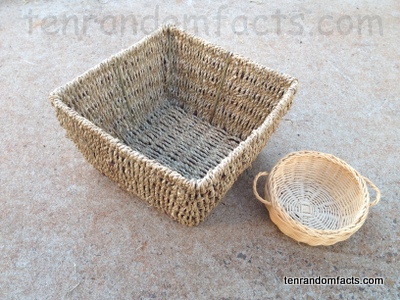Have you looked inside the wicker basket recently?
- Baskets are receptacles used for the primary purpose of storing objects, or for holding objects so that they can be easily moved.
- Baskets are typically woven, and can range from an open-weave form to a solid-walled structure, and materials commonly used include leaves, grass, wicker, cane, wood, straw, bamboo, plastic, metal and horse hair.
- Many baskets can be woven with an attached or removable lid, or often they have no lid at all.
- Baskets can be used ornamentally; in cooking; as a trap; for holding laundry; as a rattle; and they are also sometimes used for traditional religious purposes.
- Baskets were originally intended for carrying loose items so that that could easily be transported.
- The first baskets were said to be originally short-lived because they were made of bark; and the containers were later supported with woven fibres to further extend their use.
- Baskets have been in use for thousands of years and the remains of well preserved baskets have been discovered from possibly as early as 5000 BC.
- Baskets can come in numerous varieties of shapes, sizes, colours and patterns and they can range from 0.6 to 90 centimetres (0.24 to 35.4 inches) in diameter, or more; and in many circumstances they can be considered to be an art.
- Baskets may feature handles for ease of carrying with one’s hands, and some can be placed on one’s head to carry, which is a common traditional practice.
- Nearly every ancient culture has made an abundance of baskets throughout history, including Egyptian, Chinese, Roman, Greek, Japanese, and Native American, while the latter are particularly well known for their baskets.
Bibliography:
Basket, 2015, Made How, http://www.madehow.com/Volume-4/Basket.html
Basket, 2015, Wikipedia, http://en.wikipedia.org/wiki/Basket






